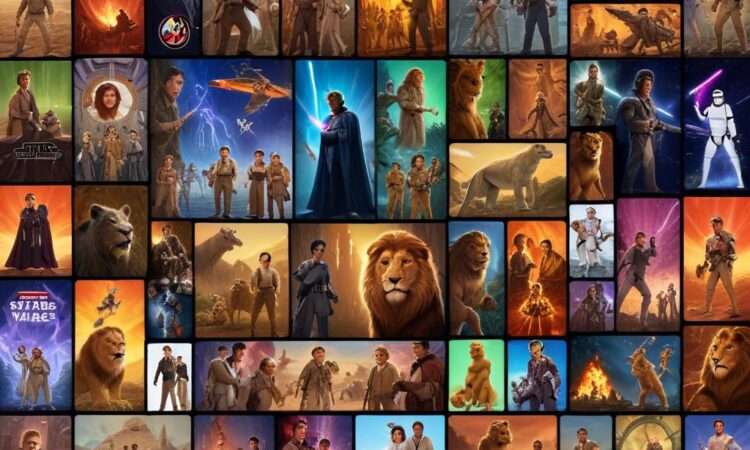The Power of Nostalgia in Film: Remakes, Sequels, and the Allure of the Familiar
In the ever-evolving landscape of contemporary cinema, a fascinating trend has emerged: the resurgence of remakes, sequels, and reboots. These cinematic ventures, often drawing upon beloved franchises and cherished classics, tap into the potent power of nostalgia, offering audiences a comforting return to familiar worlds and characters. This essay delves into the growing phenomenon of nostalgia-driven filmmaking, exploring its appeal and its potential downsides.
The Appeal of Nostalgia
Nostalgia, a bittersweet longing for the past, holds a powerful allure in our modern world. It’s a fundamental human emotion, often triggered by sights, sounds, or experiences that evoke memories of simpler times or happier moments. For many, nostalgia serves as a comforting escape from the anxieties and uncertainties of the present. It offers a sense of familiarity, stability, and connection to a time when life felt less complicated.
The film industry has astutely recognized and capitalized on the power of nostalgia. By revisiting beloved franchises and characters, studios can tap into a pre-existing audience’s affection and create a sense of shared experience. Audiences who grew up with these stories are drawn back by the promise of revisiting their youth, reconnecting with characters they loved, and reliving cherished memories. This sense of familiarity and emotional resonance often translates into box office success, as audiences flock to theaters to indulge in a comforting wave of nostalgia.
The Rise of Remakes, Sequels, and Reboots
The proliferation of remakes, sequels, and reboots in recent years is a testament to the growing influence of nostalgia in filmmaking. These ventures offer a unique blend of the familiar and the new. They often retain the core elements of the original story, characters, and themes, while introducing fresh perspectives, storylines, and visual aesthetics. This delicate balance allows studios to attract both nostalgic fans of the original work and a new generation of viewers seeking exciting and engaging entertainment.
The success of franchises like \”Star Wars,\” \”Jurassic Park,\” and \”Marvel Cinematic Universe\” speaks to the enduring power of nostalgia in driving cinematic trends. These franchises have consistently delivered blockbuster films that tap into audiences’ longing for the past, offering a sense of continuity and shared experience. They often feature a blend of new and familiar characters, allowing them to appeal to both veteran fans and newcomers.
Beyond the Box Office: The Cultural Impact of Nostalgia
The rise of nostalgia-driven cinema has had a profound impact on contemporary culture. Remakes, sequels, and reboots often spark conversations about the evolution of storytelling, the role of nostalgia in our cultural landscape, and the value of originality in filmmaking. They encourage viewers to reflect on the enduring power of classic stories and characters, while also prompting debates about the ethical implications of relying heavily on familiar franchises.
Some argue that the focus on nostalgia represents a decline in creativity and innovation in Hollywood. They lament the lack of original ideas and the reliance on tried-and-true formulas, which they see as limiting the potential for groundbreaking and thought-provoking cinema. Others contend that nostalgia is a natural part of human experience and that revisiting beloved stories can be a source of joy, comfort, and shared connection.
The Potential Downsides of Nostalgia
While nostalgia has its undeniable appeal, it’s crucial to acknowledge its potential downsides. Relying too heavily on familiar franchises can stifle creativity and innovation, leading to a sense of predictability and stagnation in the film industry. The constant rehashing of existing stories can also diminish the impact of original narratives and prevent new voices from emerging in the cinematic landscape.
Furthermore, the relentless pursuit of nostalgia can create a sense of stagnation, trapping audiences in a cycle of re-releases and remakes, rather than embracing fresh and original stories. This can also contribute to a sense of cultural homogenization, as the film industry prioritizes recognizable and commercially successful franchises over diverse and innovative works.
Balancing Nostalgia and Innovation
The challenge for contemporary filmmakers lies in striking a delicate balance between nostalgia and innovation. Instead of merely rehashing familiar stories, they should use nostalgia as a springboard for creative exploration. This means building upon the foundations of beloved franchises while introducing fresh perspectives, themes, and characters that challenge expectations and expand the boundaries of storytelling.
The most successful nostalgia-driven films are those that manage to strike a chord with both old and new audiences. They pay homage to the past while simultaneously offering something new and engaging. This approach can help to ensure that nostalgia is not merely a tool for exploitation but a catalyst for creative evolution.
Conclusion
The power of nostalgia is undeniable, and its influence in contemporary cinema is evident in the proliferation of remakes, sequels, and reboots. These ventures tap into a deep-seated longing for the past, offering audiences a comforting return to familiar worlds and characters. However, it’s crucial to recognize the potential downsides of relying too heavily on nostalgia. The film industry should strive to balance the allure of the familiar with the need for innovation and originality, ensuring that the pursuit of nostalgia doesn’t stifle creative expression and the emergence of new voices in the cinematic landscape.

